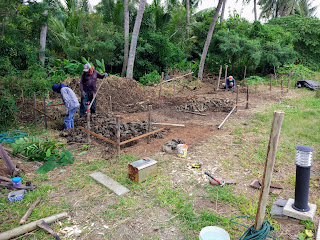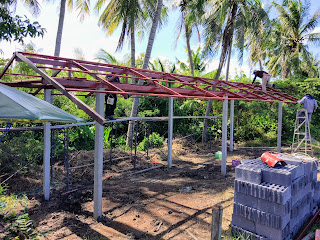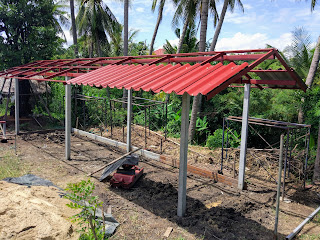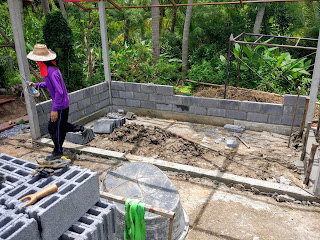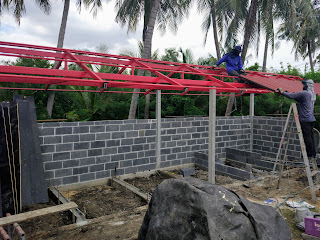The cages we built quite a while back for the compost piles we’ve had going for about two years have been almost perpetually overflowing, so I’ve been thinking for some time now that it is time to build something bigger and more permanent. In addition, it seems like a good idea to build a roof to keep the rain off the compost piles so they don’t flood.
Also, the holding drums that we built for the composting toilet are filling up, and I haven’t had anywhere to dump them into a large compost pile to let them age for a year or two so they are safe to use around the land.
So we finally put this “composting hacienda” project on the front burner.
The idea is to have a roofed set of six separate composting areas. Each one will be wider, longer, and taller than the three composting cages we have now that are overflowing.
Two of the six chambers will be used for the composting of materials from the composting toilet. As one is filling up, the other can sit idle and age. Once the second one finishes ageing, it can be emptied, the compost used, and the first one can begin ageing while the second chamber is filled up. I’m targeting about 18 months of ageing time to let all the (possible) pathogens in the compost pile die out before using it on the land.
Side note: I just want remind you that while you might be tempted to feel an “ick factor” thinking about humanure compost, just remember that dogs, cats, rats, lizards and many other animals are continuously “doing there thing” all over the land. In their case, they are living a “who knows what kind of pathogens they are exposed to life” and their bodily wastes are not being mixed in with kitchen scraps, lots of sawdust, and eventually lots of grass and plant clippings so that the temperature rises to over 60C killing off most of the pathogens, and then ageing for more than another year to let anything not killed off by the heat enough time to die out on its own. Considering that most pathogens that make humans sick need to live inside a human host to survive, it doesn’t take long outside of humans to kill them off. See Tables 7.8-7.13 here for a compilation of study results regarding how long various human pathogens can survive in soil. But as always, use your own judgement to keep yourself and your family safe. Many factors may vary between your case and ours or anyone else’s.
The remaining four chambers can be used for grass clippings and other land scraps that have less of a pathogen issue and don’t need to be aged for so long.
Finally, we are planning to put a rain gutter on the small roof and collect the rain water in 200L drums to use for keeping the compost piles wet. Compost likes to be “wet like a wrung-out sponge”. Too wet and the conditions will become anaerobic and smelly. Too dry, and things will become desiccated and the composting process will come to a stop.
Here are some photos of the construction process so far:
Just for fun, I went for a bright red color paint on the steel roof support beams. I figure that while I want my home to be natural earth tones, a pile of discarded organic matter can use some bright colors to keep it cheery. 😉
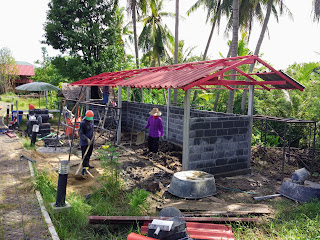 The
The 